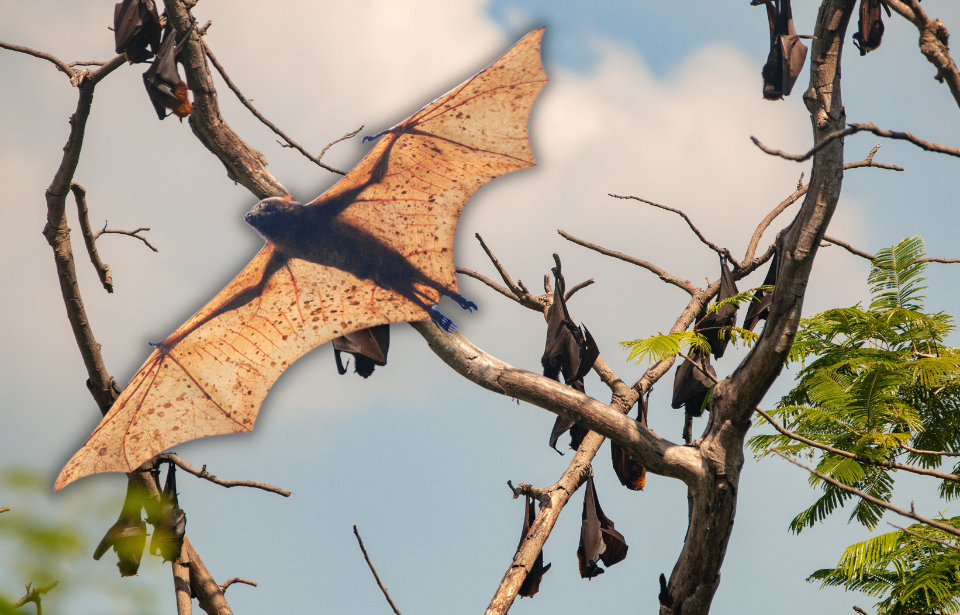With a wingspan longer than the height of many humans, the golden-crowned flying fox is the largest bat in the world. Despite their surprising size, these megabats are not creatures from our nightmares. Instead, they are gentle beings that benefit the environment. Unfortunately, several factors have caused the golden-crowned flying fox to become endangered, but organizations are working to try and save the species.
The golden-crowned flying fox megabat
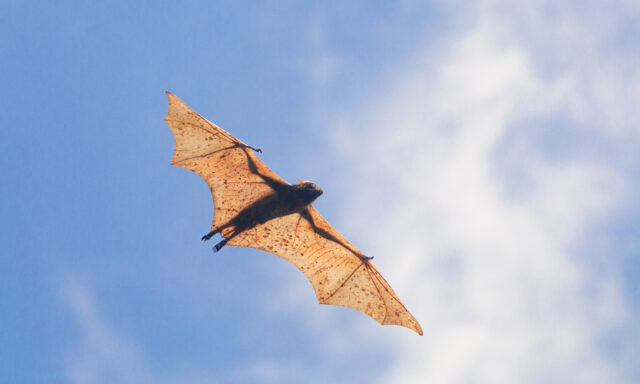
The golden-crowned flying fox is endemic to the jungles of the Philippines. There are other species of flying megabats that have been located in parts of Asia, Australia, and Africa, but the golden-crowned flying fox is exclusively found in the Philippines. Their name was given due to the “V” shape of golden color that appears at the top of their heads. The distinctive marking begins between their eyes and extends upward to the nape of their necks, like a crown.
Despite being labeled one of the largest bats in the world, their size may still come as a shock to some people. When they are roosting, these bats are no more than a foot long, with their body length averaging between seven and 11.5 inches. With such small bodies, they don’t weigh much, with most hitting 2.6 pounds. It’s when they extend their wings that their true size is clear. The golden-crowned flying fox has the longest-recorded forearm length of any bat species, measuring 8.3 inches long. When outstretched, their wingspan can reach a total length of five feet and six inches.
Colonies can reach up to 10,000 members. Anyone who catches sight of their roosts may catch a fright at the many mammals dangling from the trees. Some may think that one of the largest bats in the world could do some serious damage to humans, but thankfully, this species is harmless and poses no threat to people.
What does the largest bat in the world eat?
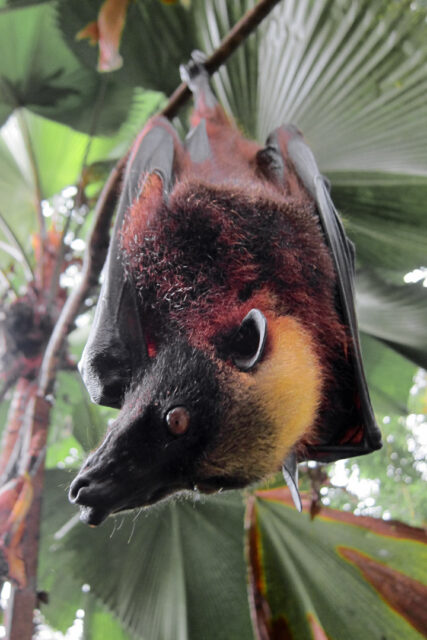
One of the reasons the golden-crowned flying fox is not a threat to humans is that it is a primarily frugivorous creature. This means it mainly eats fruits – specifically figs – as well as some other plants, like ficus leaves. If you know anything about bats, this should not come as a surprise, as only three of the 1,400 species of bats in the world are known to consume blood.
Unlike several other species, the golden-crowned flying fox does not use echolocation to navigate as its travels. Instead, they use their senses of sight and smell to help them get around the jungle. Largely nocturnal, they fly at night, foraging for figs and leaves to fill their stomachs and eating around one-third of their body weight every day.
Researchers agree that it is likely that their overconsumption of fruits is a means to provide an adequate source of protein. Their diet also serves as a benefit to the jungle ecosystem, as they disperse fig seeds through their fecal matter. The seeds grow into plants which the bats then feed from once they bear fruit.
During the day, these oversized bats sleep in the treetops, snuggled in their large groups of peers. Although they are nocturnal, they are known to participate in some activities during the day as well, including grooming, stretching, and relieving themselves.
A study found that these megabats are actually quite intelligent, sharing a similar intelligence level to that of a domesticated dog. The study trained 10 golden-crowned flying foxes to pull a lever when they wanted food. They were then released back to their respective habitats. More than three years later, some of the bats from the experiment were able to remember the reward they received when they pulled the lever and fulfilled the action again without being prompted.
What could possibly be a predator to the largest bat in the world?
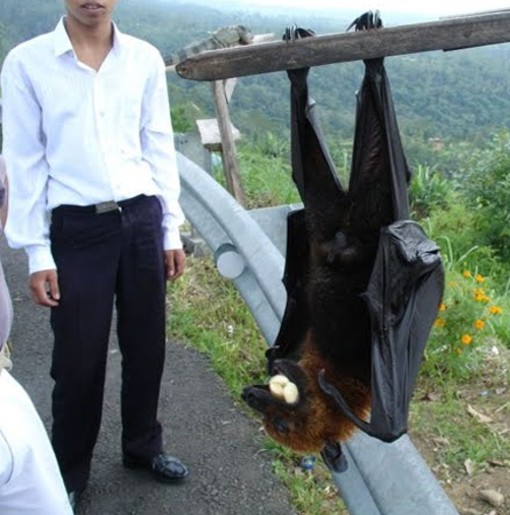
It might be hard to believe given its size, but the golden-crowned flying fox has multiple predators. In the natural world, they have three main predators – the Philippine eagle, the white-bellied sea eagle, and the reticulated python. In recent years, the population of these megabats has declined drastically, causing the International Union for Conservation of Nature to list the golden-crowned flying fox as an endangered species.
However, natural predators are not the biggest threats to these oversized bats – nor are they likely what caused such a serious decline in their population. The biggest threat to the golden-crowned flying fox is humans. Poaching and deforestation are the two biggest human influences that pose a threat to these large bats.
Today, m of the old-growth forests of the Philippines have been cut down. The megabats have had to abandon their roosting sites in search of other safe places elsewhere on the islands. As cities continue to develop and infrastructure continues to expand, these bats are forced to try and set up roosts on slopes far above sea level. And as human activity continues to inch closer and closer to their habitats, they can be more easily found in areas close to villages and towns.
Poaching is another serious threat to the golden-crowned flying fox. People hunt these megabats not only as a means of profit but also for recreation and sport. Profit is the largest motivator, as poverty and hunger are major problems in parts of the Philippines. When hunters locate a roost, they wound or kill more than intended, since many bats that are killed do not fall to the ground where they can be retrieved.
Conservation efforts to save the golden-crowned flying fox
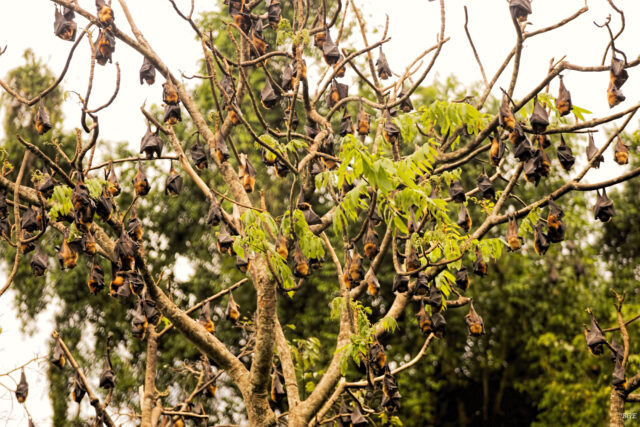
Several organizations and efforts have been working to try and save the golden-crown flying fox. In 2001, the Philippine Wildlife Resources Conservation and Protection Act declared the megabat a protected species. Many of their roosts are located in protected areas. Unfortunately, the law that protects them is not rigidly enforced. Poachers continue to hunt, often without punishment.
Captive breeding programs are working on regenerating the species in an effort to fight extinction. However, this is a difficult project, as female golden-crowned flying foxes are known to only have one litter a year – sometimes every other year – and each litter consists of only one pup.
More from us: Haast’s Eagle: The Extinction of a Prehistoric Predator
Increasing the population could be achieved through a combination of breeding, a reduction in deforestation, and a reduction in poaching.
